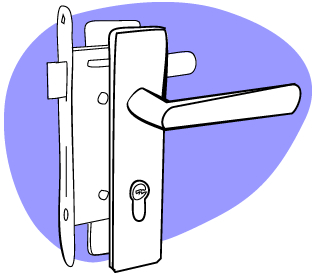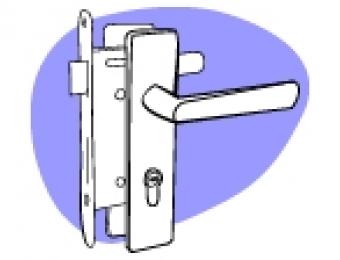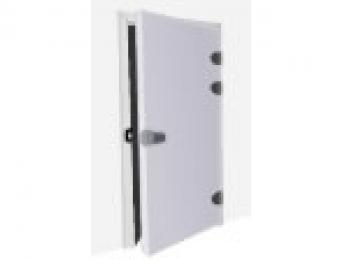
What is a door lever?
A door lever is a door locking mechanism with an elongated, horizontally aligned handle. The door lever keeps a door closed until it is turned around, at which point it releases a latch bolt and allows the door to be opened. Door levers can incorporate a lock - the lock is typically located either in the escutcheon plate or in the barrel of the lever, closest to the spindle.
How do door levers work?
When the handle is turned, a square shaped spindle (a thin metal rod) inside turns. This rotates a cylinder, which is connected to the latch bolt that keeps the door closed. As it turns, the latch bolt is withdrawn into the door, allowing it to open. A spring inside the lever returns the handle to the upright position, and pushes the latch bolt back out again to keep the door secure when closed.
Where is it used?
Door levers appear in much the same places as door knobs do - in most cases, the difference between the two is largely aesthetic. Door levers are slightly easier to operate with other body parts though if your hands are full and you need to get through.
Levers are recommended over door knobs for people with fine motor impairments, or other manual disabilities, both because they don't require the user to 'clutch' the handle, and also because their operation is in part assisted by gravity.
How should door levers be installed?
Unlike door knobs, which can occasionally be installed in the middle of the door for visual effect, a lever mechanism will always need to be installed a few centimetres away from the door’s handed edge (i.e. on the side not occupied by hinges).
How high should door levers be installed?
The Australian Standard AS 1428.1 (Design for access and mobility, Part 1: General requirements for access) recommends that door handles of all types should be installed at a height not less than 900mm and not more than 1100mm above the plane of the finished floor. Most door levers are installed at around this height anyway (i.e. around waist height for the average adult), although in some older houses door knobs or levers are installed much higher up.
Are there any variations?
Door levers come in a wide variety of materials, sizes and designs, ranging from the plain bar we’ve all seen countless times to more ornamental affairs with impressions, carvings and other decorative motifs.
Door levers are also available with privacy locks or snibs for use on bathrooms or bedrooms, and with key-in-lever locks for use on external doors.



